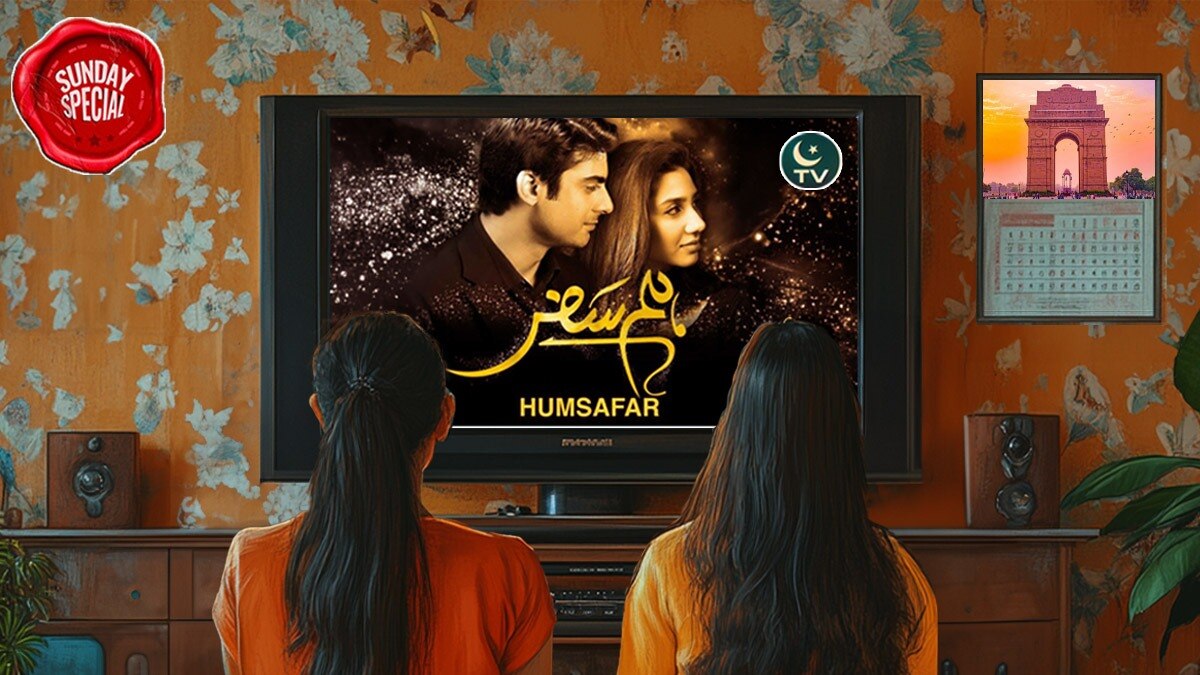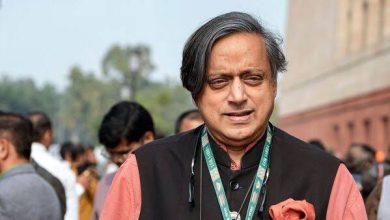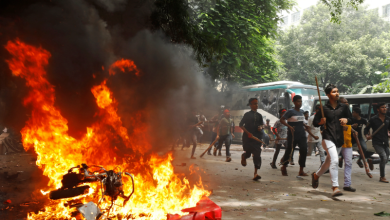Indian Gen Z drawn to Pakistani serials for relatability and cultural appeal
‘It's fascinating to see how similar we are to those we’ve been taught to hate'

New Delhi: While relations between India and Pakistan are often fraught, one thing that consistently brings Indians and Pakistanis together is a shared love for Pakistani dramas, reported India Today.
According to Kashmir Media Service, Pakistani serials like Humsafar and Zindagi Gulzar Hai have garnered a loyal following among India’s Gen Z, who appreciate the relatable storylines, cultural familiarity, and tightly-wrapped plots that contrast with India’s often prolonged soap operas.
Gen Z here refers to the demographic cohort born roughly between the late 1990s and early 2010s.
Gen Z audiences in India first encountered these serials on platforms like YouTube and Instagram Reels, which introduced iconic scenes and catchy soundtracks that quickly went viral.
Many were captivated by the brief, intense narratives—often running between 15 and 30 episodes—which feel both refreshing and engaging compared to Indian shows that can span hundreds of episodes. Pakistani series have also rekindled a love for Urdu, with its poetic dialogues and elegant cultural references resonating strongly with young Indians.
This younger audience finds Pakistani serials intriguing as they reflect lifestyles, family dynamics, and values that are surprisingly similar to their own, despite the political divide.
“It is interesting to watch people you have been told to hate all your life are so simple, and they are so much like you,” Varul, a 22-year-old Noida-based journalist, tells India Today
For many Gen Z viewers, the serials provide a refreshing cultural bridge, offering insights into a parallel world shaped by common roots.
As more Pakistani dramas become available on streaming platforms like Zee5 and YouTube, India’s younger generation continues to connect with characters and stories that feel both exotic and familiar, proving that shared culture can sometimes bridge divides where politics cannot.
Indians have been watching Pakistani dramas at least since the late 1980s. That is when people used to rent out video cassette players and recorders (VCPs and VCRs) to binge on movies and dramas.
“I used to love watching Pakistani shows in the 80s and 90s. We used to watch it through VCRs rented from video cassette libraries,” Swaty Prakash, who works for an NGO based in Delhi, tells India Today Digital.
The whole addiction started with Pakistani slap-stick comedy shows.
“Several slapstick comedy shows like Budhdha Ghar Pe Hai were really popular,” says 45-year-old Prakash. She began watching the shows when she was in her early teens.
Lamat Hasan, a Delhi-based journalist who has lived in Islamabad from 2007 to 2013, says people loved watching comedy shows like Bakra Qiston Pay.
Tanhaiyan and Dhoop Kinarey were two of the Pakistani dramas widely watched in India back in the 80s and 90s.
These serials were a hit in Jodhpur, Lucknow, Srinagar and all over Punjab.
Those were the days of government-run TV channel Doordarshan, and Pakistani serials were available only on video cassettes in India.
For the new generation, the peak of Pakistani dramas came with the launch of Zee’s Zindagi channel in 2014. Shows like Zindagi Gulzar Hai and Humsafar gained instant success. Others shows like Daastan and Mere Afzal also gained popularity in India. Even Indian filmmakers and actors lapped up these shows.
“Western shows like Friends were aspirational, but the Pakistani shows were more relatable,” says Prakash. “We used to watch shows like Tanhaiyaan. It is also that these stories were delicately told and were interesting,” Hasan tells India Today Digital.
As Zee Zindagi beamed the Pakistani serials, the Indian audience was also wooed by lehz[j]a (etiquette) and libaas (attire). However, Zee’s Zindagi had a short life span, as it had to pull the plug in 2017. It discontinued all Pakistani serials, the channel’s USP, after the 2016 Uri terror attack.One of the biggest reasons why Pakistani serials are a hit among Indians is because they are wrapped up in about 30 episodes. With some not even going beyond 15 episodes with the tight narration. Compare this to the India-made saas-bahu serials that drag on for 1,000 episodes at times.
For Indians, most things to do with Pakistan, be it cricket and politics, have been a love-hate affair. However, Pakistani serials have found enduring love from Indians, across decades and generations.
This is why even the Indian Gen Z are binging on Pakistani serials along with their usual Netflix dope.
India’s ties with Pakistan have been patchy. Pakistan snapped diplomatic ties after the revocation of Article 370, which granted special status to occupied Jammu and Kashmir.








